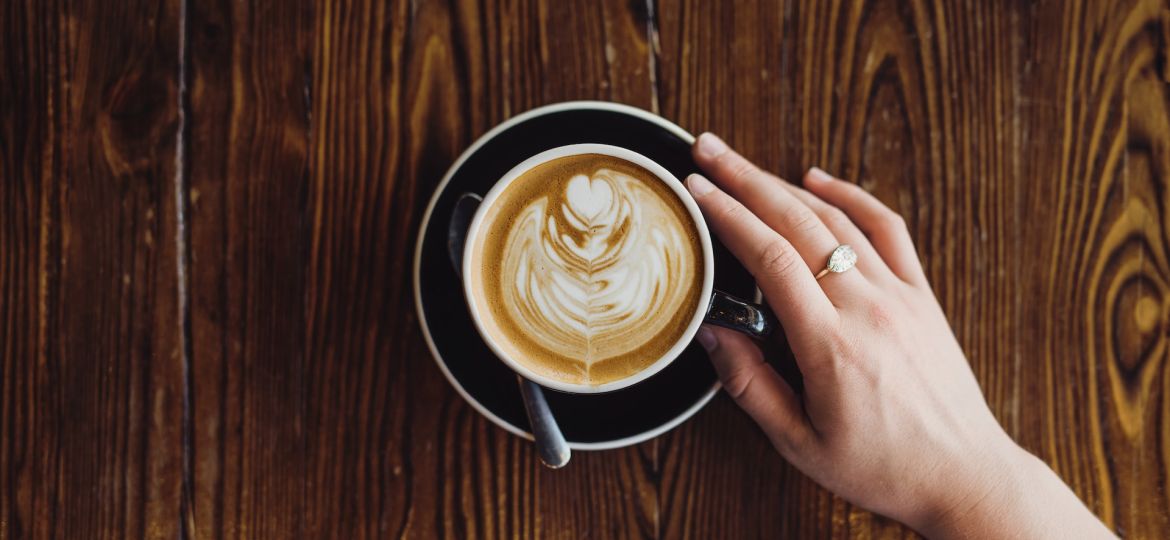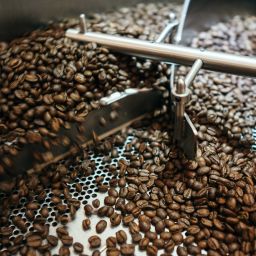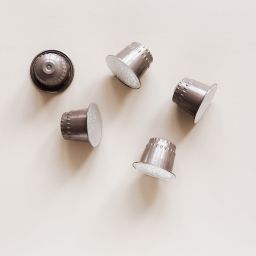
Flat white coffee, a term that often sparks curiosity and debate among coffee enthusiasts, has seen a surge in popularity across the globe. At its core, a flat white is an espresso-based drink, but it’s so much more than just another coffee on the menu. It’s a symbol of coffee culture evolution, a subject of national pride, and a topic of friendly rivalry.
Its simplicity belies the depth of flavor and technique that goes into making a perfect cup. The debate around its origin and what exactly sets it apart from other coffee drinks like lattes and cappuccinos only adds to its mystique and appeal.
What Exactly is a Flat White?

So, what sets a flat white apart from other coffee drinks? Here’s a breakdown:
- Ingredients: A flat white is made with a double shot of espresso and steamed milk.
- Preparation: The key is in the milk’s texture. It’s steamed to create a velvety microfoam, but not as frothy or airy as in a latte or cappuccino.
- Serving: Typically, it’s served in a smaller, 160-180 ml cup.
The unique characteristics of a flat white lie in its balance and simplicity. The double espresso shot provides a strong coffee base, while the steamed milk adds a creamy texture without overpowering the espresso’s flavor. This combination results in a coffee that is rich, smooth, and has a more pronounced coffee flavor compared to its milkier counterparts.
The art of the flat white is in achieving the perfect harmony between milk and espresso, making it a favorite among coffee purists and those who appreciate the subtleties of a well-crafted cup.
Flat White vs. Latte: Understanding the Differences
When you’re at a café, staring at the menu, you might wonder: What’s the real difference between a flat white and a latte? Well, let’s break it down:
- Serving Styles and Sizes: A latte is typically served in a taller glass, while a flat white finds its home in a smaller, wider cup. This isn’t just for looks; it affects the coffee-to-milk ratio.
- Milk Texture and Coffee Concentration: The flat white boasts a velvety microfoam, less airy than the latte’s frothier milk. This means the flat white has a higher coffee concentration, giving it a more robust flavor.
- Role of the Barista: The barista’s skill in milk texturing and pouring is crucial. They’re the artists who balance the espresso with the right amount of milk, ensuring that each drink maintains its unique character.
The Cultural Significance of Flat White
The flat white isn’t just a coffee; it’s a cultural icon. In Australia and New Zealand, where the debate over its origin rages on, the flat white is more than a morning pick-me-up; it’s a source of national pride. Its simplicity and elegance have captivated coffee lovers, leading to its global spread.
From the streets of Sydney to the cafes of London and New York, the flat white has adapted to local tastes while retaining its core identity. This drink’s journey reflects the evolving landscape of global coffee culture, where tradition meets innovation.
Health Aspects: Flat White vs. Latte
When it comes to health, the battle between flat white and latte is more than just taste. It’s about what’s in your cup:
- Calorie Count and Nutritional Differences: Generally, a flat white has more calories and sugar than a latte, mainly due to the higher concentration of espresso and less milk volume.
- Healthier Choice: If you’re calorie-conscious, a latte might be your go-to, especially if you opt for skim milk. But remember, the best choice depends on your dietary preferences and needs.
For a deeper dive into the nutritional aspects, check out this comprehensive comparison of flat whites and lattes. Whether you’re a flat white fan or a latte lover, understanding these differences can help you make a more informed choice for your next coffee break.
The Art of Making a Perfect Flat White
Making a perfect flat white is like conducting an orchestra; every element needs to be in perfect harmony. Here’s the lowdown:
- Espresso: Start with a high-quality espresso. This is the soul of your flat white, so no compromises here.
- Milk: The milk should be fresh and preferably full-fat for that creamy texture. It’s all about getting that microfoam right – not too frothy, not too flat.
- Temperature: Heat the milk to the sweet spot where it’s hot but not scalded. This is crucial for achieving the right texture.
The magic happens when you pour the steamed milk over the espresso. The goal is to create a thin layer of microfoam on top. It’s this delicate balance of espresso and milk, combined with the skill of the barista, that makes a flat white stand out. It’s not just a coffee; it’s an experience.
The Evolution of Flat White Over the Years
The flat white has come a long way from its disputed origins. Over the years, it has evolved, adapting to the changing tastes and trends of the global coffee scene.
- Recipe and Presentation: Initially, the flat white was all about the ratio of espresso to milk. Now, it’s also about the quality of the beans, the texture of the milk, and even the art on top.
- Global Influence: As the flat white traveled, it picked up local flavors and styles. In some places, it’s creamier; in others, the espresso takes center stage.
This evolution reflects the dynamic nature of coffee culture. It’s not just about keeping up with trends; it’s about innovation and personalization. The flat white of today is a testament to this journey, a blend of tradition and modernity.
From its humble beginnings to its current status as a coffee shop staple, the flat white continues to charm coffee aficionados worldwide. Its evolution is a story of adaptation, creativity, and the enduring love for a good cup of coffee.
Personal Stories and Experiences with Flat White
Every cup of flat white comes with a story. Whether it’s a barista perfecting their pour or a coffee lover discovering their new favorite, these anecdotes add a personal touch to each sip.
- Barista Tales: Many baristas share tales of mastering the art of the perfect flat white. It’s a journey of trial and error, learning how the slightest change in milk temperature or espresso shot can transform the drink.
- Coffee Enthusiasts: For coffee lovers, finding the perfect flat white can be a revelation. It’s often described as the moment they truly understood the balance of espresso and milk.
Personal preferences play a huge role in shaping the flat white experience. Some prefer a stronger espresso flavor, while others might lean towards a creamier texture. It’s this versatility that makes the flat white a canvas for personal expression in the world of coffee.
The Future of Flat White in the Coffee Industry
The flat white, once a niche order, has now cemented its place in the coffee industry. Looking ahead, here’s what we might expect:
- Trends and Predictions: The flat white is likely to evolve, incorporating new flavors and brewing techniques. We might see more variations, each reflecting local tastes and preferences.
- Place in Modern Coffee Culture: It’s more than just a drink; it’s a symbol of the evolving coffee culture, blending tradition with innovation.
As we look to the future, the flat white stands as a testament to the ever-changing world of coffee. It’s a drink that has adapted and thrived, and its journey is far from over.
In the end, the flat white isn’t just about the coffee; it’s about the stories, the people, and the endless possibilities that come with every cup.
FAQs
Flat whites have stirred up quite the curiosity. Here are some answers to the most common questions:
- What’s the difference between a flat white and a latte?
- The main difference lies in the milk texture and coffee-to-milk ratio. A flat white has a higher concentration of coffee and a velvety microfoam, while a latte is milkier with more froth.
- Is a flat white stronger than a cappuccino?
- Yes, generally. A flat white typically has more espresso and less milk than a cappuccino, giving it a stronger coffee flavor.
- How much caffeine is in a flat white?
- It depends on the espresso used, but typically, a flat white has about the same caffeine content as a standard double espresso.
- Can you make a flat white with plant-based milk?
- Absolutely! While the texture might vary slightly, plant-based milks like almond, soy, or oat can be used to create a delicious flat white.
- Why is it called a ‘flat’ white?
- The ‘flat’ in flat white refers to the smooth, flat surface of the milk foam, as opposed to the frothy foam of a cappuccino.
The Essence of Flat White
In essence, the flat white is more than just a coffee drink; it’s a testament to the art and science of coffee making. Its enduring appeal lies in its simplicity, the perfect harmony of rich espresso and velvety milk. Whether it’s the subject of a friendly debate over its origins or a barista’s canvas for showcasing skill, the flat white holds a special place in the hearts of coffee lovers worldwide. As it continues to evolve and adapt, one thing remains constant: the flat white is a beloved staple in the ever-changing world of coffee.









